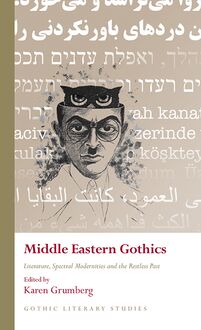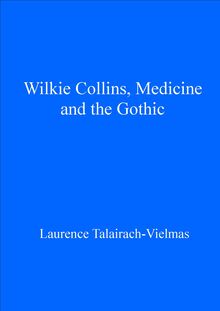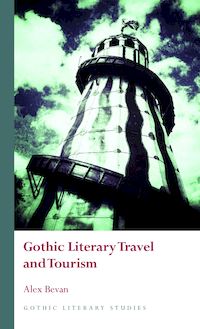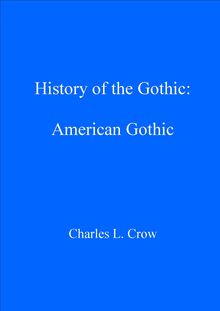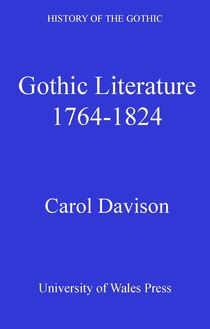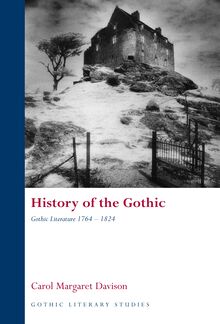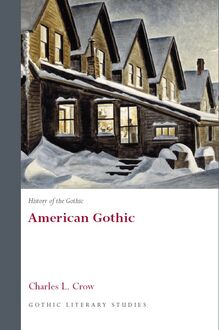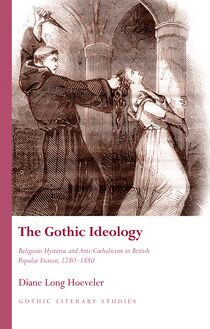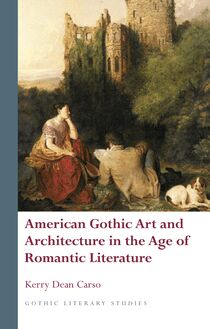-
 Univers
Univers
-
 Ebooks
Ebooks
-
 Livres audio
Livres audio
-
 Presse
Presse
-
 Podcasts
Podcasts
-
 BD
BD
-
 Documents
Documents
-
- Cours
- Révisions
- Ressources pédagogiques
- Sciences de l’éducation
- Manuels scolaires
- Langues
- Travaux de classe
- Annales de BEP
- Etudes supérieures
- Maternelle et primaire
- Fiches de lecture
- Orientation scolaire
- Méthodologie
- Corrigés de devoir
- Annales d’examens et concours
- Annales du bac
- Annales du brevet
- Rapports de stage
La lecture à portée de main
Vous pourrez modifier la taille du texte de cet ouvrage
Découvre YouScribe en t'inscrivant gratuitement
Je m'inscrisDécouvre YouScribe en t'inscrivant gratuitement
Je m'inscrisEn savoir plus
Vous pourrez modifier la taille du texte de cet ouvrage
En savoir plus

Description
Gothic Metaphysics is a radical departure from Freudian-centred criticism of Gothic literature. It aims to explore our modern dilemma in the time of the Anthropocene, by bringing to light the role of Gothic since its inception in 1764 in holding space for a worldview familiar to certain mystical traditions – such as alchemy, which held to the view of a living cosmos yet later deemed ‘uncanny’ and anachronistic by Freud. In developing this idea, Gothic Metaphysics explores the influence of the Middle Ages on the emergence of Gothic, seeing it as an encrypted genre that serves as the site of a ‘live burial’ of ‘animism’, which has emerged in the notion of ‘quantum entanglement’ best described by Carl G. Jung and physicist Wolfgang Pauli in the theory of synchronicity linking alchemy with quantum mechanics. This relationship finds itself in dialogue with the Gothic’s long-held concern for the ‘sentience of space and place’, as described by renowned Gothic scholar Fredrick Frank. The volume Gothic Metaphysics is multi-valent and explores how Gothic has sustained the view of a sentient world despite the disqualification of nature – not only in respect to the extirpation of animism as a worldview, but also with regard to an affirmation of consciousness beyond that of human exceptionalism.
Chapter 1: Gothic Metaphysics: From Alchemy to the Anthropocene
Chapter 2: Occult Subjects: Parapsychology and the Foreign Body in Psychoanalysis
Chapter 3: There Is No Occult-Free Zone: Transgenerational Emergence
Chapter 4: An Other-Valued Reality: Animism and Literature
Chapter 5: Ghost Dance
Chapter 6: Shirley Jackson’s The Haunting of Hill House and the Strange Question of Trans-Subjectivity
Chapter 7: Learning to Talk with Ghosts: Canadian Gothic and the Poetics of Haunting in Eden Robinson’s Monkey Beach
Chapter 8: EcoGothic and the Anthropocene: The Ecological Subject
Chapter 9: Afterwor(l)ds: All My Relations
Bibliography
Sujets
Informations
| Publié par | University of Wales Press |
| Date de parution | 15 novembre 2021 |
| Nombre de lectures | 0 |
| EAN13 | 9781786837967 |
| Langue | English |
Informations légales : prix de location à la page 0,4400€. Cette information est donnée uniquement à titre indicatif conformément à la législation en vigueur.
Extrait
GOTHIC METAPHYSICS
SERIES PREFACE
Gothic Literary Studies is dedicated to publishing groundbreaking scholarship on Gothic in literature and film. The Gothic, which has been subjected to a variety of critical and theoretical approaches, is a form which plays an important role in our understanding of literary, intellectual and cultural histories. The series seeks to promote challenging and innovative approaches to Gothic which question any aspect of the Gothic tradition or perceived critical orthodoxy. Volumes in the series explore how issues such as gender, religion, nation and sexuality have shaped our view of the Gothic tradition. Both academically rigorous and informed by the latest developments in critical theory, the series provides an important focus for scholarly developments in Gothic studies, literary studies, cultural studies and critical theory. The series will be of interest to students of all levels and to scholars and teachers of the Gothic and literary and cultural histories.
SERIES EDITORS
Andrew Smith, University of Sheffield
Benjamin F. Fisher, University of Mississippi
EDITORIAL BOARD
Kent Ljungquist, Worcester Polytechnic Institute Massachusetts
Richard Fusco, St Joseph’s University, Philadelphia
David Punter, University of Bristol
Chris Baldick, University of London
Angela Wright, University of Sheffield
Jerrold E. Hogle, University of Arizona
For all titles in the Gothic Literary Studies series visit www.uwp.co.uk
Gothic Metaphysics
From Alchemy to the Anthropocene
Jodey Castricano
© Jodey Castricano, 2021
All rights reserved. No part of this book may be reproduced in any material form (including photocopying or storing it in any medium by electronic means and whether or not transiently or incidentally to some other use of this publication) without the written permission of the copyright owner. Applications for the copyright owner’s written permission to reproduce any part of this publication should be addressed to the University of Wales Press, University Registry, King Edward VII Avenue, Cardiff CF10 3NS.
www.uwp.co.uk
British Library Cataloguing-in-Publication Data
A catalogue record for this book is available from the British Library.
ISBN 978-1-78683-794-3
e-ISBN 978-1-78683-796-7
The right of Jodey Castricano to be identified as author of this work has been asserted in accordance with sections 77 and 79 of the Copyright, Designs and Patents Act 1988.
C ONTENTS
Acknowledgements
1 Gothic Metaphysics: An Introduction
2 Occult Subjects: Parapsychology and the Foreign Body in Psychoanalysis
3 There is No Occult-free Zone: Transgenerational Emergence
4 An Other-valued Reality: Animism and Literature
5 Ghost Dance
6 Shirley Jackson’s The Haunting of Hill House and the Strange Question of Trans-subjectivity
7 Learning to Talk with Ghosts: Canadian Gothic and the Poetics of Haunting in Eden Robinson’s Monkey Beach
8 EcoGothic and the Anthropocene: The Ecological Subject
9 Afterwor(l)ds: All my Relations
Notes
Bibliography
I do not know whether the things I have told you are of value to you, and I am sorry that I repeat things. I have also done this in my books, I always consider certain things again, and always from a new angle. My thinking is, so to speak, circular. This is a method which suits me. It is in a way a new kind of peripatetics. 1
(C. G. Jung)
That is not what I meant at all: / That is not it, at all. 2
(T. S. Eliot, ‘The Love Song of J. Alfred Prufrock’)
Something’s beginning is always a particularly magical point, the opening into a world that’s new. There – this book has already begun, which means the magic has been done. And, now, all that’s needed is to find the words to fill the abyss between beginning and end. 3
(Peter Kingsley)
1 C. G. Jung, quoted in Sonu Shamdasani, Jung and the Making of Modern Psychology: The Dream of a Science (New York: Cambridge University Press, 2003), p. 16.
2 T. S. Eliot, ‘The Love Song of J. Alfred Prufrock’, https://www.poetryfoundation.org/poetrymagazine/poems/44212/the-love-song-of-j-alfred-prufrock .
3 Peter Kingsley, Catafalque: Carl Jung and the End of Humanity , vol. 1 (n.p.: Catafalque Press, 2018), p. 7.
A CKNOWLEDGEMENTS
Truth be told, this acknowledgements page reaches back decades to those friends, colleagues and interlocutors – human and non-human – whose generative thinking and ways of being in the world have encouraged me to keep on. Because I tend towards spatial thought, please imagine this eclectic page takes the form of a multidimensional Venn diagram that connects all beings – including non-humans – who over the years taught me what I needed to know, even when I didn’t want to learn. Thank you.
I want to acknowledge first and foremost that this book was completed while living and working upon the unceded, ancestral territory of the Syilx people of the Okanagan Nation.
I am grateful to so many past and present: most recently to my talented and truly intrepid editor, Kel Pero, for helping me chart a constellation of thoughts into Gothic Metaphysics and for raising my spirits when the going got tough. Abundant thanks to Sarah Lewis, Head of Commissioning at the University Wales Press, whose quiet patience over years encouraged and enabled me to compete this book. Likewise to the series editors Andrew Smith and Benjamin Fisher, who supported the initial proposal and its subsequent morphings. Special mention goes to Martin Bressani for inviting me to participate in ‘Architecture and the Environmental Tradition: the Atmospheric in British Architecture from 1750 to 1850’, a SSHRC-funded project that had me thinking of Gothic architecture and affective presence. Thanks, too, to the Faculty of Creative and Critical Studies for support in the form of a Book Publication Grant.
Deep gratitude goes to those from the early days to the present, even though some remain in spirit only: my parents, David and Norine Castricano; Mary Gerolin, my grandmother, who knew the value of a good story; Joan Roberts, Mercedes F. Duran and Susan Clarke, some of my dearest friends. My gratitude goes also to Margaret Eady, whose faith from the beginning confirmed there was a path and that I could take it. I am also deeply thankful for those whose friendship and love meant putting in good miles, in all weather, on the road together. Some are theorists, literary scholars, dancers, poets, critical thinkers, artists, astrologers, activists, singers of songs, magicians; all are golden: Janet MacArthur, Anderson Araujo, Amanda Snyder, Shona Harrison, Jessica Stites Mor, Sharon Thesen, Jennifer Gustar, Karis Shearer, Margaret Reeves, Miriam Grant, Cynthia and Bruce Mathieson, Sonnet L’Abbé, Barb Rhodes, Debby Helf, Carlene Dingwall, Raven Sinclair, Sherry Robinson, Lorraine Weir, Joe Hetherington, Annie Monod, Maureen Mores. To Joel Faflak, Julia Wright, Jason Haslam, Jim Weldon and Emmy Misser, thank you for your friendship and wicked-good scholarship. My thanks to Michael Treschow, friend, colleague and Head of the Department of English and Cultural Studies, who opened space for me to think and write when it really counted, and to Bryce Traister, Dean of the Faculty of Creative and Critical Studies, whose support and encouragement made all the difference.
I am also grateful for the guidance of Corinna Stevenson and Wes Gietz, whose teachings over the past five years showed me the wisdom of council and the sweat lodge, the four-fold path of the vision quest, including the days and nights spent in solitude on the land, all of which inform my thinking in this book. And to those big-hearted questers with whom I spent many, many hours at Ravenwood in circle, sharing meals, sharing stories, finding our way: Raz Ruby Singh, Dawn King, Catherine Howe, Wade Smith, Rachel Boult, Claudia Tressel, Helen Pattinson, Chantal Lysyk, Jessica Dorzinsky and Isabelle Laplante. I also owe more than gratitude to Muriel McMahon and Nelia Tierney, guides in dreams, alchemy and the work. Last but never least, I also give thanks to the four-legged knowledge-keepers with whom I have shared this long journey: Ned, Lupin, TC, Leroy, Arthur, Felix, Willie, Harley, Max1, and, Little Bush Man, Simon. Today I live with and learn from Blue, the silver tabby, Eddie, Burmese of black cat nation, Stevie of Nicks, Norwegian Forest Cat, Siamese flame-point Ollie, the youngest, a cat with a wicked sense of humour, and, of course, Max, whose Chi-Corgi capacity for joy is boundless.
All of these beings, humans and other animals named herein, have taught me the deepest meaning of kinship. In lighter moments, they remind me that unless the house is on fire, to not take myself too seriously.
1
Gothic Metaphysics: An Introduction
A New Kind of Peripatetics: Transmissions of the Unsayable
We stand at the crossroads of change in the history of Western consciousness, and the decisions we make concern survival on this planet. On one hand, we have egocentric individualism, and on the other, an extreme collectivism. Both have become deficient, even as our current worldview rests on the premise of our separation from and mastery of nature, in which nature is treated as an object with ourselves as controlling subject, born of the belief that we have been given dominion over the earth. Indeed, this belief has its roots in the distant past, and is thought to have gained purchase during the Scientific Revolution, when this dominant mode of thinking, referred to by historians of science as ‘mechanical philosophy’, signalled the end of what historian Morris Berman calls ‘participating consciousness’, once epitomized in the Hermetic tradition by the practice of alchemy, which was ‘the last great coherent expression of participating consciousness in the West’ and was replaced by non-participating consciousness and the ‘esoteric-exoteric split’. 1
During the Renaissance, alchemy became a target for the Reformation as well as scientific positivism,
-
 Univers
Univers
-
 Ebooks
Ebooks
-
 Livres audio
Livres audio
-
 Presse
Presse
-
 Podcasts
Podcasts
-
 BD
BD
-
 Documents
Documents
-
Jeunesse
-
Littérature
-
Ressources professionnelles
-
Santé et bien-être
-
Savoirs
-
Education
-
Loisirs et hobbies
-
Art, musique et cinéma
-
Actualité et débat de société
-
Jeunesse
-
Littérature
-
Ressources professionnelles
-
Santé et bien-être
-
Savoirs
-
Education
-
Loisirs et hobbies
-
Art, musique et cinéma
-
Actualité et débat de société
-
Actualités
-
Lifestyle
-
Presse jeunesse
-
Presse professionnelle
-
Pratique
-
Presse sportive
-
Presse internationale
-
Culture & Médias
-
Action et Aventures
-
Science-fiction et Fantasy
-
Société
-
Jeunesse
-
Littérature
-
Ressources professionnelles
-
Santé et bien-être
-
Savoirs
-
Education
-
Loisirs et hobbies
-
Art, musique et cinéma
-
Actualité et débat de société
- Cours
- Révisions
- Ressources pédagogiques
- Sciences de l’éducation
- Manuels scolaires
- Langues
- Travaux de classe
- Annales de BEP
- Etudes supérieures
- Maternelle et primaire
- Fiches de lecture
- Orientation scolaire
- Méthodologie
- Corrigés de devoir
- Annales d’examens et concours
- Annales du bac
- Annales du brevet
- Rapports de stage

